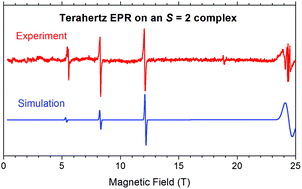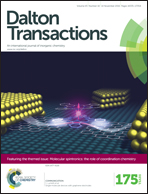Measuring giant anisotropy in paramagnetic transition metal complexes with relevance to single-ion magnetism
Abstract
“Giant magnetic anisotropy” is a phenomenon identified fairly recently in coordination complexes of nd- and nf-block ions. It can have different origins but is commonly (if not always correctly) described through zero-field splitting (ZFS), which can reach values of 100 cm−1 and beyond. This magnitude of anisotropy imparts on some of the complexes in question properties akin to single-ion magnets (SIMs). As a parameter of great importance, it needs to be accurately measured, a process that is far from being trivial. In this perspective article we give an overview and brief characterisation of the many experimental methods employed to that purpose, highlighting the strengths and weaknesses of each.


 Please wait while we load your content...
Please wait while we load your content...